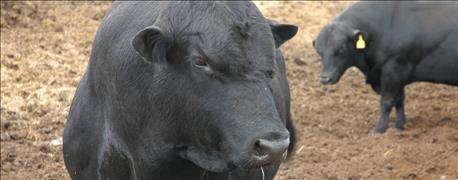June 3, 2016

The South Dakota Animal Industry Board is issuing another warning about an apparent outbreak of trichomoniasis in beef cattle.
Thirteen South Dakota beef herds have now been diagnosed with Tritrichomonas foetus (trich) infection since December 2015. The disease has been confirmed in six herds in Oglala Lakota County, three in Dewey County, two in Corson County and one in Gregory County.
Trichomoniasis is a serious disease transmitted between cows and bulls during breeding. Once established in the female reproductive tract, trich causes an inflammatory reaction leading to abortion. Cows may eventually clear the infection or may remain carrier animals. There is no treatment for infected bulls.

Testing bulls for trich is a good idea before turning them out with cows. Thirteen herds in South Dakota have tested positive for trich.
Trichomoniasis is increasing significantly, according to the Dustin Oedekoven, state veterinary. Only 10 herds were infected in the previous five years.
Producers are often unaware of the problem until the disease is well established in a herd, he says.
Signs that the disease may be present in a herd include a high number of open cows or the presence of many late-calving cows, which result from the early term abortions and then rebreeding of the cows.
Cows that do not have calves as expected each spring is another sign. Cows may have aborted calves after being found pregnant in the fall and after the bulls were removed from the herd, thus they suddenly come up “open” in the spring. These cows should be culled to feeding and slaughter channels as a good management practice. This is especially important if the animals are in an area known to have trich positive herds.
Although infected herds may have 50% or more of their cows open in the fall or spring, often the percentage is much lower if the herd became infected late in the previous breeding season.
Early detection of the disease is the best way of preventing the economic devastation seen when the disease has a one to two year head start in the herd.
Because they may be infected without outward signs, open cows and non-virgin bulls represent a risk for introduction of this disease to new herds. Any herd that adds non-virgin cows or bulls from an outside source or has commingling (either on purpose or accidental) with another herd may be at some risk for trich infection, Doeden says.
Testing of all non-virgin herd bulls should be strongly considered even if a producer is not a known contact herd. The disease may have serious economic impacts when left undetected. Turning an infected bull out to summer pasture should be avoided at all costs. Testing of all bulls prior to turnout can be done concurrently with breeding soundness exams and is the best way to protect all producers in the area.
Four of the positive herds in the state have been detected recently in conjunction with bulls undergoing normal spring breeding soundness exams in preparation for turn out.
South Dakota Animal Industry Board staff is contacting the owners of neighbor and contact herds associated with all known positive herds. However, it is possible other herds in the state could also be affected by the disease.
All South Dakota producers, especially those that have cattle on summer pasture in the affected counties are encouraged to trich test their bulls before breeding season.
Source: SD Animal Industry Board
You May Also Like




